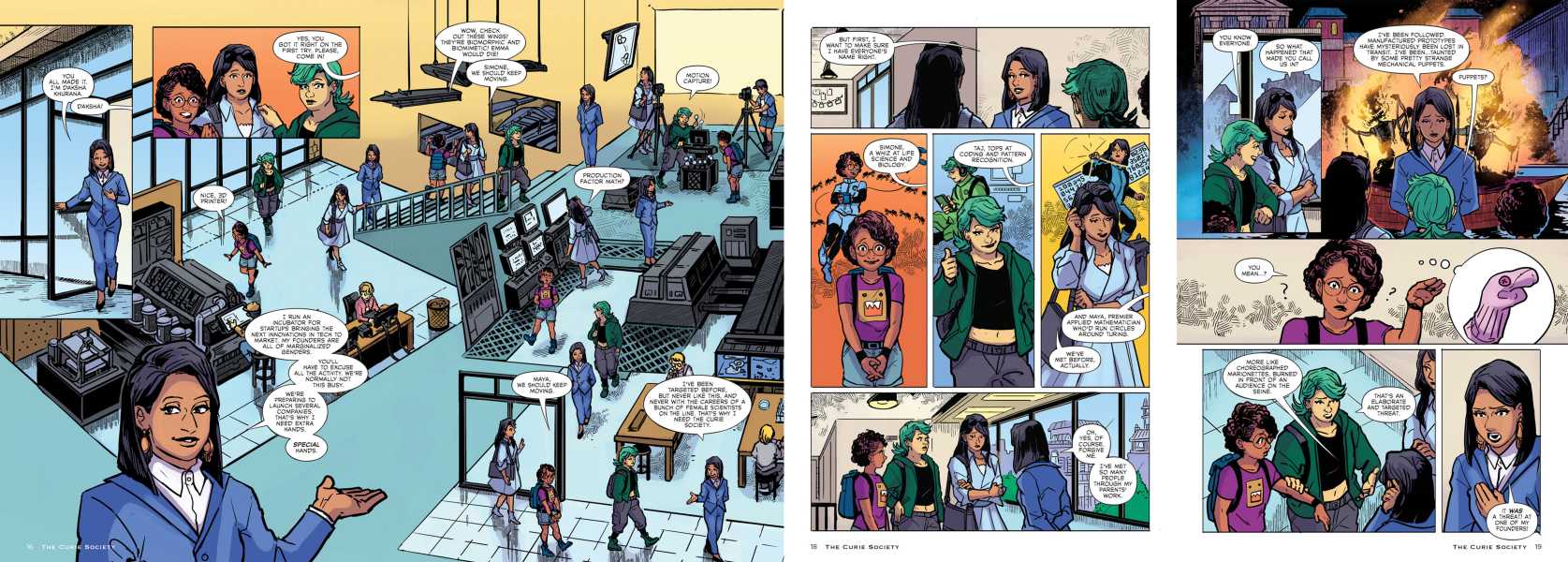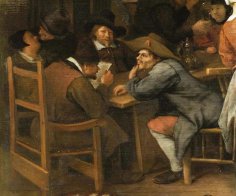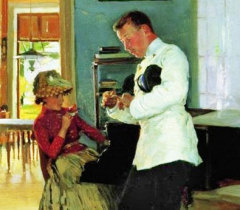Imagine a secret organization that combines the extraordinary talents and physical abilities of its agents with amazing gadgets to protect the world from evil villains who seek to use science to seize power.
No, we're not talking about the next James Bond episode, but about the remarkable female scientists from the young adult graphic novel The Curie Society.
Following the adventures of young scientific prodigies Simone, Maya, and Taj, the two books in the series are action-packed stories in which the protagonists learn to use their talents to become the next secret agents of the Curie Society, a secret organization created to support outstanding female scientists around the world (and save it, too).
Ahead of the second book's release, we spoke with MIT professor Rita Raman, one of the series' chief scientific advisors, about how graphic novels can advance STEM education, why diversity is important, and what it's like to be immortalized in comic book format.
Alexander McNamara: How did you become involved in the creation of the Curie Society books?
Rita Raman: I met Heather and Adam [Einhorn and Staffaroni, the authors of the books] a few years ago when I was a postdoc at MIT, and we were talking about the lack of content for tween girls and teens that presented science as exciting and rigorous. Something that inspired people, but also showed them, in a reasonable way, what was going on in the STEM world today.
When Heather and Adam were working on the first book, they talked to a lot of scientists and engineers from all corners of science. There was a lot of collaboration going into the creation of the first story, which I think was especially important when they were developing the three main characters and their backstories.
AM: What was your role in the series and what assistance did you provide in its creation?
RR: It varied from book to book. In the first one, they were talking to different scientists who were working in different fields and had different paths to science. I think it was really important for them to take bits and pieces of people's real experiences and integrate them into the characters.
My story involves a lot of moving around as a child, and as a result, I missed a lot of classes moving between different schools. So of the three characters, Simone's experience, who was younger and not necessarily emotionally in tune with her maturity, although she was scientifically in tune, is partly based on me.
In the context of Maya, who is supposed to be South Asian or Indian, I think the cultural aspects of science and other things are partly me too. The third character [Taj] is the complete opposite of me, but frankly reminds me of one of my close friends.

In the first book, I shared my experiences and gave feedback on a small piece of science, but we were really talking more about the portrayal of bioethics and how scientists consider or ignore the consequences of their work. Who should be in the room when these decisions are being made? How do we portray a villain who seems like a good scientist at first and then something goes wrong? I gave feedback on that level.
In the second book, they decided to focus on one lead scientist, and so I saw the story and helped shape it from the earliest drafts. I did a lot more of the accuracy checking, but also, if we needed a technology that could, say, temporarily paralyze someone but not permanently harm them, I would brainstorm different tools and technologies that could be used.
We also decided to do a longer piece about the work we do in our lab. Sometimes when you want to create something super exciting to read, you're describing technologies that are going to be around in five or ten years, right? So we wanted to give people
Sourse: www.livescience.com





